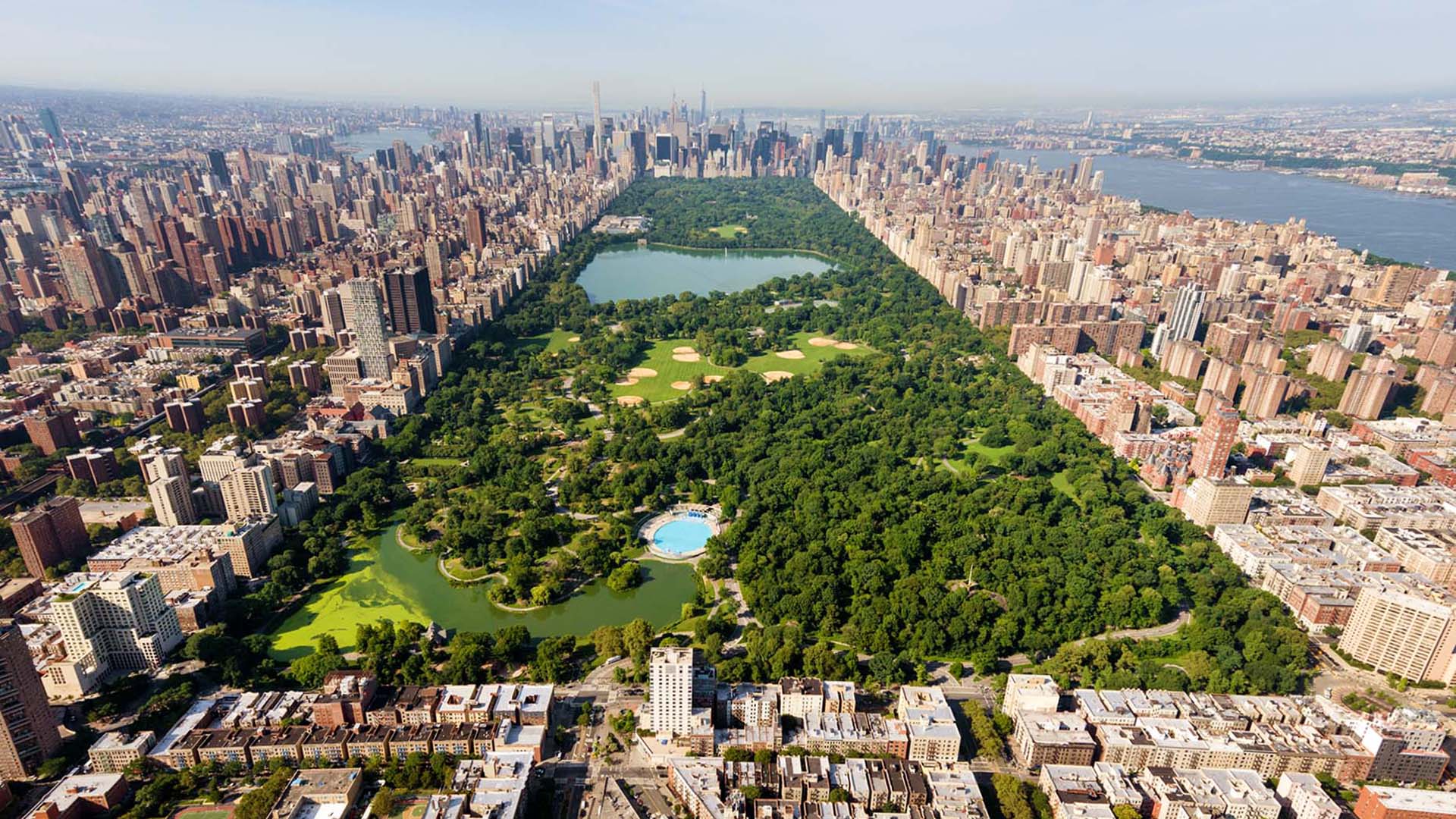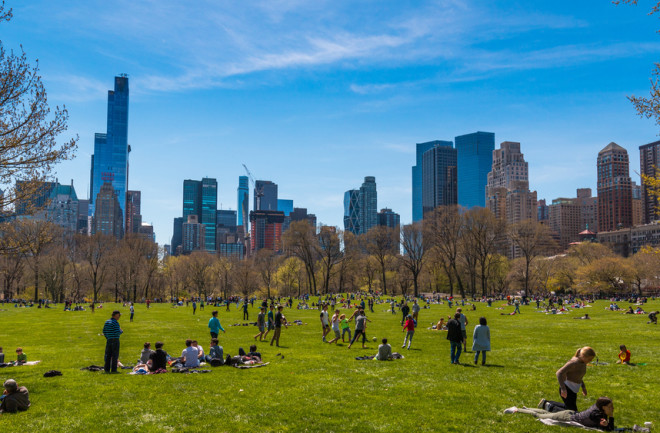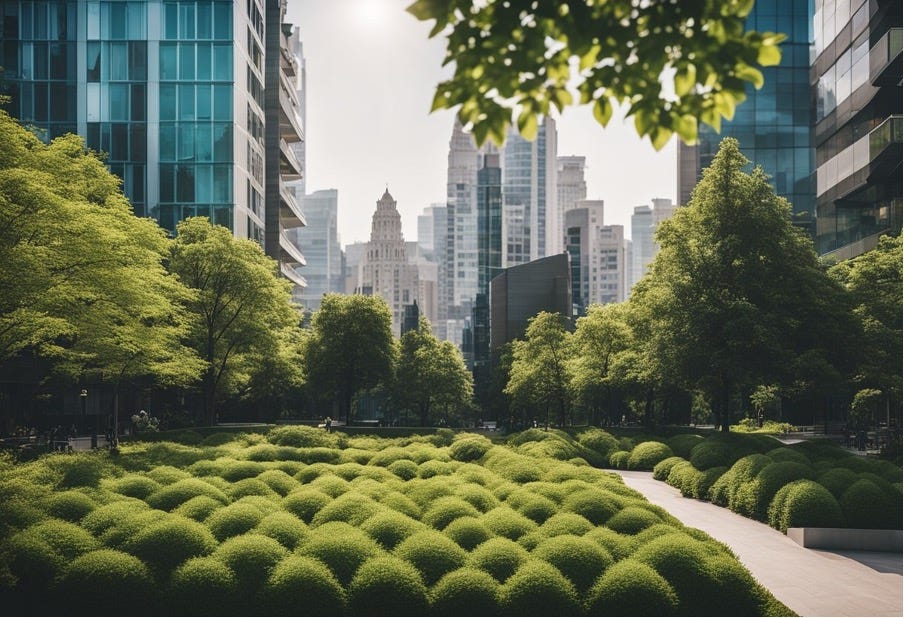Green Spaces In the midst of bustling cities and concrete jungles, green spaces emerge as vital sanctuaries that offer solace, rejuvenation, and connection to the natural world. From sprawling parks to community gardens, these verdant oases play a crucial role in enhancing the well-being of individuals, fostering biodiversity, and mitigating the impacts of urbanization. Let’s explore the significance of green spaces and the myriad benefits they bring to urban environments.

The Essence of Green Spaces
Green spaces encompass a diverse array of natural landscapes, including parks, gardens, forests, and wetlands, that provide refuge from the hustle and bustle of city life. Whether large or small, these spaces serve as havens where people can escape the stresses of urban living, immerse themselves in nature, and recharge their spirits.
- Parks: Urban parks serve as communal gathering spots where people can engage in recreational activities, socialize with friends and family, and enjoy the beauty of nature. From picnics in the sun to leisurely strolls along tree-lined paths, parks offer a plethora of opportunities for relaxation and enjoyment.
- Community Gardens: Community gardens empower residents to cultivate their own food, connect with nature, and foster a sense of community. These shared green spaces not only provide fresh produce but also promote sustainable living practices, environmental stewardship, and healthy lifestyles.
- Green Roofs and Vertical Gardens: In densely populated urban areas, green roofs and vertical gardens offer innovative solutions to limited space and environmental challenges. These green infrastructure features help reduce heat island effects, improve air quality, and enhance aesthetic appeal while maximizing the use of available space.
Benefits of Green Spaces
- Physical Health: Spending time in green spaces has been linked to numerous physical health benefits, including reduced stress levels, lower blood pressure, improved cardiovascular health, and enhanced immune function. Activities such as walking, jogging, or practicing yoga in parks promote exercise and outdoor recreation, contributing to overall well-being.
- Mental Well-being: Nature has a profound impact on mental health, with studies showing that exposure to green spaces can alleviate symptoms of anxiety, depression, and mood disorders. Simply being surrounded by trees, plants, and open skies has a calming effect on the mind, promoting relaxation and emotional resilience.
- Social Cohesion: Green spaces serve as gathering places where people from diverse backgrounds can come together, interact, and forge connections. Parks, playgrounds, and community gardens facilitate social interactions, cultural exchanges, and community-building activities, fostering a sense of belonging and social cohesion.
- Ecological Benefits: Green spaces provide essential habitat for wildlife, support biodiversity, and contribute to ecosystem resilience. Urban parks, in particular, act as refuges for native plants and animals, serving as vital corridors for migration and dispersal in increasingly fragmented landscapes.
- Climate Resilience: Green spaces play a critical role in mitigating the impacts of climate change by absorbing carbon dioxide, reducing air pollution, and mitigating urban heat islands. Trees and vegetation provide shade, cool the air through evapotranspiration, and help regulate temperature extremes, making cities more resilient to rising temperatures and extreme weather events.
Challenges and Opportunities

Despite their numerous benefits, green spaces face challenges such as urbanization, land use conflicts, and budget constraints. As cities continue to grow and develop, it is essential to prioritize the preservation, expansion, and equitable distribution of green spaces to ensure that all residents have access to nature’s benefits.
- Equity and Access: Access to green spaces is not equitable across all communities, with marginalized neighborhoods often lacking adequate parks and recreational facilities. Addressing disparities in access requires prioritizing green space investments in underserved areas and engaging local residents in the planning and design process.
- Sustainability and Resilience: Green spaces must be designed and managed with sustainability and resilience in mind, incorporating principles of biodiversity conservation, water management, and climate adaptation. Sustainable landscaping practices, such as native plantings and rainwater harvesting, can enhance the ecological value and resilience of green spaces.
- Education and Engagement: Promoting public awareness and engagement is crucial for fostering appreciation and stewardship of green spaces. Education programs, volunteer opportunities, and community events can empower residents to play an active role in caring for and advocating for the preservation of their local parks and natural areas.
Cultivating a Greener Future
As urbanization accelerates and cities become increasingly dense, the importance of green spaces in enhancing quality of life and promoting environmental sustainability cannot be overstated. By recognizing the myriad benefits of green space and investing in their preservation and expansion, cities can create healthier, more livable environments for current and future generations. Embracing nature in urban landscapes is not only a necessity but also a fundamental step towards building resilient, equitable, and vibrant communities.
Exploring the Pros and Cons of Green Spaces: Balancing Nature’s Benefits with Urban Realities
Green spaces, from lush parks to community gardens, are cherished sanctuaries within urban landscapes, offering respite from the concrete jungle and providing a host of benefits for both people and the linetogel login environment. However, while these verdant oases contribute to physical and mental well-being, they also present challenges and limitations that must be carefully navigated. Let’s delve into the advantages and disadvantages of green space to understand their role in shaping sustainable and livable cities.

Advantages of Green Spaces
- Physical Health Benefits: Green spaces promote active lifestyles by providing opportunities for exercise, recreation, and outdoor activities such as walking, jogging, and cycling. Access to nature has been linked to improved physical health outcomes, including reduced stress levels, lower blood pressure, and enhanced immune function.
- Mental Well-being: Nature has a profound impact on mental health, with studies showing that exposure to green space can alleviate symptoms of anxiety, depression, and mood disorders. Spending time in natural environments fosters relaxation, reduces mental fatigue, and promotes emotional well-being.
- Ecological Benefits: Green spaces support biodiversity, provide habitat for wildlife, and contribute to ecosystem resilience. They act as carbon sinks, sequestering carbon dioxide from the atmosphere, and help mitigate the effects of climate change by reducing urban heat islands, improving air quality, and regulating water runoff.
- Social Cohesion: Green spaces serve as communal gathering places where people from diverse backgrounds can come together, interact, and forge connections. Parks, playgrounds, and community gardens facilitate social interactions, cultural exchanges, and community-building activities, fostering a sense of belonging and social cohesion.
- Aesthetic Value: Green spaces enhance the visual appeal of urban environments, providing relief from the monotony of built structures and adding beauty and tranquility to cityscapes. Trees, plants, and open green areas contribute to a sense of place and identity, enriching the urban fabric and improving overall quality of life.
Disadvantages of Green Spaces
- Maintenance Costs: Green space require ongoing maintenance and management, including landscaping, irrigation, pest control, and waste removal. The financial burden of maintenance can be substantial, particularly for large parks and recreational facilities, and may strain municipal budgets.
- Land Use Conflicts: The allocation of land for green space can spark conflicts with competing interests, such as residential development, commercial expansion, and infrastructure projects. Balancing the need for green space with the demands for urban growth and development requires careful planning and negotiation.
- Security Concerns: Green space, particularly those located in urban areas, may face security challenges such as vandalism, theft, and illicit activities. Safety concerns can deter people from using green space, especially at night or in poorly lit areas, undermining their potential benefits for community engagement and recreation.
- Inequitable Access: Access to green space is not equitable across all communities, with marginalized neighborhoods often lacking adequate parks and recreational facilities. Addressing disparities in access requires prioritizing green space investments in underserved areas and engaging local residents in the planning and design process.
- Environmental Impact: While green space offer numerous environmental benefits, their creation and maintenance can also have negative environmental impacts. The use of pesticides, fertilizers, and other chemicals in landscaping practices can harm ecosystems and pollute waterways, undermining the ecological integrity of green space.
Conclusion: Navigating the Complexities of Green Spaces
Green spaces are invaluable assets that contribute to the health, well-being, and sustainability of urban environments. However, realizing their full potential requires addressing the challenges and limitations associated with their creation, maintenance, and management. By adopting sustainable practices, fostering community engagement, and prioritizing equitable access, cities can harness the transformative power of green space to create healthier, more resilient, and livable communities for all. Balancing the benefits and drawbacks of green spaces is essential for shaping sustainable urban landscapes that embrace nature while meeting the needs of present and future generations.
Read More Article About “Smart Cities: Integrating IoT for Urban Efficiency“





